#David Gower
Video
youtube
Cricket Batsmen With Their Batting Stances Flipped. See Right Handed Dav...
0 notes
Text

40 years ago today ..
An Iconic series, with an equally iconic theme, began.
89 notes
·
View notes
Text





59 notes
·
View notes
Text

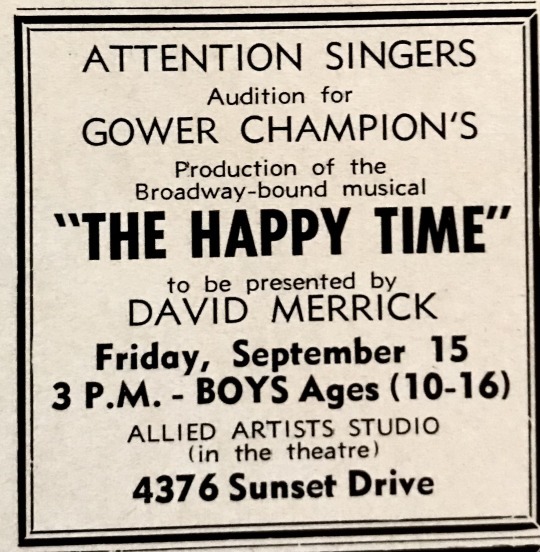

Gower Champion - David Merrick auditions held at the Allied Artists Studio at 4376 Sunset Drive.
The studio is still there today - owned by Scientology.
6 notes
·
View notes
Text
instagram
#Sam Heughan#Duncan Lacroix#David Berry#Rik Rankin#Sophie Skelton#Alexander Vlahos#Paul J Gorman#Andrew Gower#Starfury#Instagram
44 notes
·
View notes
Text
RECEFLASH | Carnival Row - Stagione 2

Il nostro parere sulla seconda ed ultima stagione di Carnival Row.
RECEFLASH STAGIONE 2
#carnival row#serie tv#drama#fantasy#orlando bloom#cara delevingne#Tamzin Merchant#David Gyasi#ariyon bakare#Simon McBurney#arty froushan#Andrew Gower#karla crome#recensione#LIAFF: RECEFLASH
2 notes
·
View notes
Text
#outlander#sam heughan#richard rankin#sophie skelton#andrew gower#david berry#alexander vlahos#highlanders 5
17 notes
·
View notes
Text
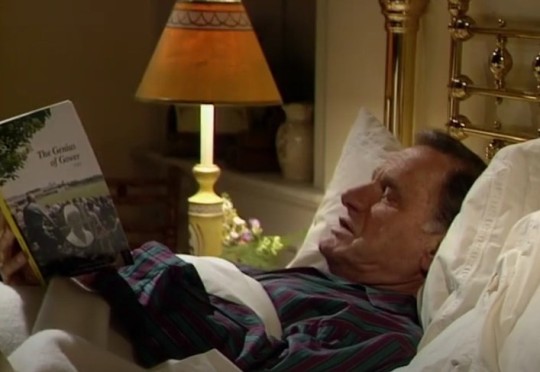
The Genius of Gower by David W. Goodyear and Robert Brooke
As Time Goes By: "The Mini-Series"
0 notes
Photo

#carnival row#tv shows#amazon prime#orlando bloom#cara delevingne#simon mcburney#tamzin merchant#david gyasi#andrew gower#karla crome#arty froushan#indira varma#jared harris#illustration#vintage art#alternative movie posters
1 note
·
View note
Text
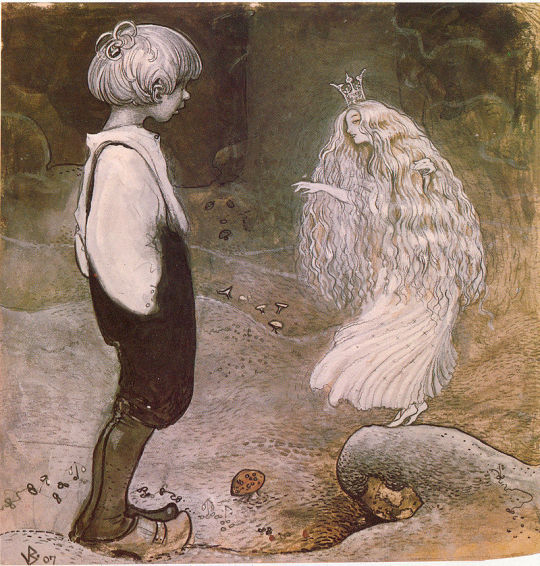
The fairy folk of Elidorus [Welsh mythology, British mythology]
Elidorus is a Welsh folklore character who supposedly lived on the Gower Peninsula. As the story goes, when he was a young lad, Elidorus went to a very strict school where the rules were draconian and the children frequently received beatings. At one point, the boy couldn’t take it anymore and ran away, hiding in a hollow on a riverbank. Elidorus stayed there for several days, wondering what he would do now, when he was found by two peculiar tiny men.
They looked human – except for their diminutive stature – and had fair white skin and very long hair. The two creatures invited him to an amazing country that was filled with delights and sport. Elidorus took their offer and followed his benefactors through a shadowy path into a gorgeous land with meadows, rivers and forests. He did not know where he was, but this strange land was populated with the same tiny creatures as the two who had invited him. Subsequently he was brought before their king, who proceeded to question him.
Eventually, the king had Elidorus brought before his son, who was roughly the same age as the young boy. The two played games together and Elidorus learned a fair bit of the fairies’ language. In this land, the people played a sport with balls made of solid gold. There were also animals here, such as tiny dogs and tiny horses. The tiny people seemed to live mainly on a diet of milk and never consumed fish or meat. They had no churches or similar institutions, rather they were devoted to the very concept of truth. In fact, this devotion was a very important aspect of their society: the fairies absolutely detested lies.
But they weren’t confined to their hidden land, for sometimes the fairies would come into our world (it is often assumed that they visited human markets to partake of our goods and products). Elidorus, too, often returned to Wales (sometimes through the same path he had used to enter the land for the first time, but he also found other paths), where he could share his story with his family. And so he told them about the strange country, the tiny people and the sport with the golden balls. But upon hearing her son’s tale, his mother grew greedy. ‘The next time you go to this strange land,’ she told Elidorus, ‘you have to steal one of these golden balls, for it would make a great gift for me.’
Her son was not a bad person, but he did not want to disobey his mother either. And so he complied and stole one of the balls, but his attempt was soon discovered. Elidorus ran away with his prize but was chased by two of the tiny people. He almost made it all the way home, but stumbled and fell just before his house. The two fairies took back the golden ball and mocked the child before returning to their hidden land.
And hidden it would remain, because when Elidorus later tried to go back so he could explain his actions, he failed to find the entrance. And he would never find it again.
Later in his life, Elidorus became a priest. When he was an old man, he told the story of the strange little people to bishop David II (the bishop of Saint David’s at the time. Elidorus remembered a good portion of the language he had learned as a child, and could speak it in front of the bishop. Curiously, the bishop recognized some words of the language, because it shared many similarities with Greek, including several identical words.
Source:
Roberts, T., 1984, Myths and Legends of Wales, Abercastle Publications.
(image source: John Bauer, this illustration is actually unrelated but I rather like it and it fits the story well)
162 notes
·
View notes
Text


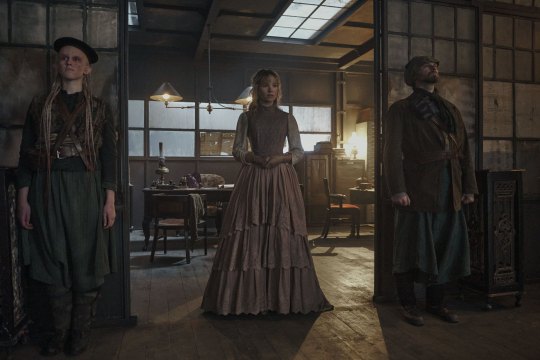





11 notes
·
View notes
Text
as usual tumblr is acting very high and mighty about knowing things that other people might not know, and getting very meanspirited about twitter refugees who haven’t heard of goncharov. additionally, there’s a lot of misinformation and jokes floating around that are probably just confusing a lot of people further, which is kind of unfair. the reason you’ve never seen goncharov is because until pretty recently nobody had since the 1970s!
tumblr has always had a thriving community of lost media enthusiasts, and the search for goncharov was kickstarted on here in 2020 after the discovery of a pair of shoes with a label that seemed to promote martin scorsese’s goncharov, a mysterious mafia movie nobody had ever heard of, leading to the ironic ‘this idiot hasn’t seen goncharov’ meme. however, under the surface, a few intrepid lost media excavators wondered, why hadn’t they seen goncharov? was this movie a total hoax?
then in late 2020- an event that got somewhat lost in the jumble of tumblr’s destiel election haze- gonch-heads found an interview with columbia pictures studio head david begelmen (best known for an embezzlement scandal that would be revealed a few years later) that mentioned goncharov. recently the unearthed movie has received praise for its striking visuals, for being a movie truly ahead of its time for the intended 1973 release, so people are often surprised to learn that goncharov was one of the all time production clusterfucks at columbia.
the interviewer quotes begelmen saying, “We don’t say that word [Goncharov],” in a tone that comes across almost scolding. when asked for clarification, he adds: “You know in theater they have the Scottish play? We have that ****ing Naples movie.”
when you look into it, it’s easy to see why goncharov was internally considered a cursed production. there are more thorough posts out there about all the disasters on the set of goncharov, but i’ll go over the two big ones. the enigmatic presence of ilya was created by practical necessity. his role was originally much larger, before the actor died on set (from a heart attack supposedly unrelated to the filming), and much of his part had to be scrapped. studio shakeups as columbia nearly went bankrupt (not helped by goncharov’s ambitious budget) and moved shooting from gower street to burbank resulted in much of the physical film going missing, thought to be destroyed until nearly 15 years later. around this time, rather than attempt to go into reshoots for an expensive nightmare led by a rookie director, the filming was canned completely.
i think because scorsese is so high profile now, people forget that in 73, he was barely scorsese. he was an up-and-coming director with some borrowed clout, but goncharov was a costly mistake that nearly ended his career. there’s a reason he rarely speaks about it. this was only compounded by matteo j.
a lot of people out there will tell you that j was the real director of goncharov, and this is false, if not an understandable mistake. matteo j has been off the grid for decades now and there’s a lot of speculation about who he was, his involvement with the original goncharov project, and why he went underground. there are rumors that he ran afoul of the actual mafia, but in my opinion that’s just sensationalism- you might as well say that the goncharov curse took him out. all we REALLY know is that he was at some point an employee of columbia pictures who gained access to the lost reels of goncharov.
j may at best be responsible for compiling his recovered goncharov footage in the late 80s, into a film which he tried to release in italy in partnership with procacci, who was attempting at that time to break into production and due to the low profile and attempted studio coverup at columbia was not fully aware of the film’s history. there are conflicting accounts of how much influence j’s editing has on the film, with some people considering him basically the marcia lucas of goncharov, and others believing him to be an opportunist taking advantage of a mostly-finished piece of art for his own gain.
obviously the studio intervened before the film’s actual release, but much of the promotional material including the poster, the shoes, etc. came from this time. it seems that columbia came to some kind of agreement with j vis a vis distribution and profits, probably in the hopes of cashing in on scorsese’s by then ascended name, which was of course splashed across the top of every goncharov poster you can find. however, the release was called off a second time once scorsese himself got wind of it.
and that seemed to be the end of it. the completed goncharov went into the columbia vault, with only a handful of misremembered bootlegs and chopped-up local tv airings even attesting to the fact that it ever existed, until a leaked copy appeared with no warning on archive.org. this seems to have been a prelude from a disgruntled netflix employee to the distribution of the film through the service (although, of course, in inferior aspect ratio, ‘remastered’ and with several scenes edited). you can still find copies of the original film on archive if you want to experience it as... well, it’s hard to say what the ‘intended’ goncharov experience is with such a complicated history behind it, but as close to intended as we can get. i don’t know if scorsese has softened on j’s version of the movie after all this time, or if he’s just let his grudge over it go. all i know for sure is that goncharov really has earned the title of the greatest mafia movie never made
400 notes
·
View notes
Text
Top 12 Portrayals of Bob Cratchit

In past Decembers, I’ve talked about my favorite adaptations of Charles Dickens’ classic tale, “A Christmas Carol,” as well as my favorite portrayals of its central character, the miserly and miserable Ebenezer Scrooge. I felt the most appropriate way to continue things this year was to cover some of the side characters from the story; after all, many of them are just as iconic as Scrooge himself, and each plays an important role in the wicked old screw’s redemptive arc. So, throughout this week, leading up to Christmas Eve, I’ll be talking about seven of the most prominent characters in the story. First up is arguably the most important role besides Scrooge himself: the moneylender’s overworked, underpaid employee, Bob Cratchit.
Cratchit is an interesting character because he is, in many ways, the exact polar opposite from Scrooge. He is a foil to the nasty curmudgeon, and his side of the story is easily the most noteworthy part of the tale aside from Scrooge himself. Whereas Scrooge is rich and bitter, jaded by his own tribulations, Bob is poor, but also mild-mannered and tender-hearted, not complaining about his situation but simply trying to make the best of it. He has faced just as much hardship, if not more, compared to Ebenezer, but he comes through it all trying to keep a level head and an optimistic outlook. It’s a bold contrast to Scrooge, who has closed off his heart to all emotion and compassion, and obsesses over his profits.
Cratchit doesn’t really change, mentally or emotionally, by the end of the story, but what makes him interesting is his steadfast morality, and the unorthodox obstacle he presents. Bob is the largest hurdle Scrooge has to overcome in his redemption; not because he’s openly antagonistic, but simply because he’s the one Scrooge has arguably wronged the most, and is the one who presents the greatest challenge to gain forgiveness from as a result. Through seeing Cratchit and his family’s plight, above all others, Scrooge realizes just how directly his actions and inactions can affect the world around him: that the people he has power over don’t just disappear when they walk out his door. They have their own lives, their own struggles, and he should consider what he can do to help his fellow people.
I’ve played Cratchit three times onstage - one of my most frequent roles - and as a result I’ve become rather protective of this character, and I have a respect for him I probably didn’t have before I ever got to take him on. Choosing my favorite versions of him from other interpretations wasn’t easy. These lists are going to be “description-less” ones; just pictures, names, and credits. Hopefully this won’t be too disappointing. With that said…here are My Top 12 Portrayals of Bob Cratchit!
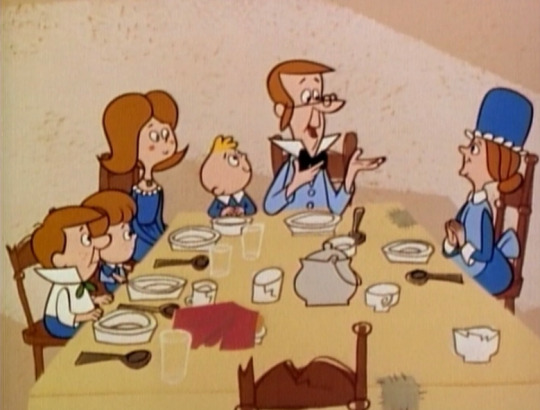
12. Jack Cassidy, from Mr. Magoo’s Christmas Carol.

11. Michael York, from A Christmas Carol (1997).
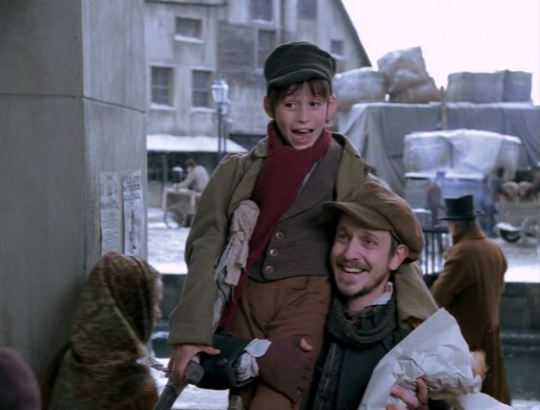
10. Edward Gower, from A Christmas Carol: The Musical (2004).

9. Mervyn Johns, from Scrooge (1951).

8. Frank Readick, Jr., from the Campbell Playhouse Radio Production (1939). (The Shadow as Cratchit. I never would have expected that one, by that credit.)

7. Gary Oldman, from A Christmas Carol (2009).

6. Mickey Mouse, from Mickey’s Christmas Carol. (Because it's Mickey Mouse. How can you NOT love him?)

5. Melvyn Hayes, from A Christmas Carol (1971).

4. Kermit the Frog, from The Muppet Christmas Carol. (I refer you to what I said about Mickey Mouse.)
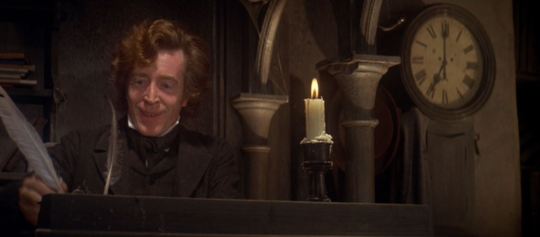
3. David Collings, from Scrooge (1970).
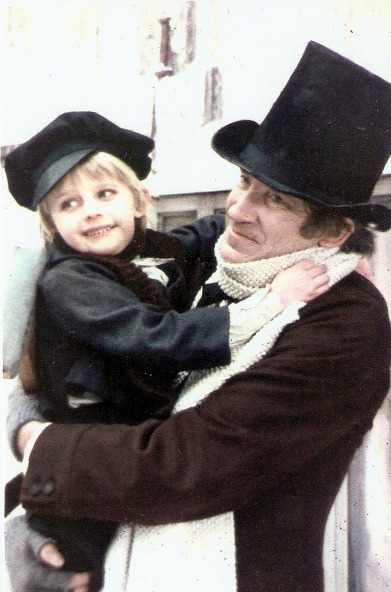
2. David Warner, from A Christmas Carol (1984).
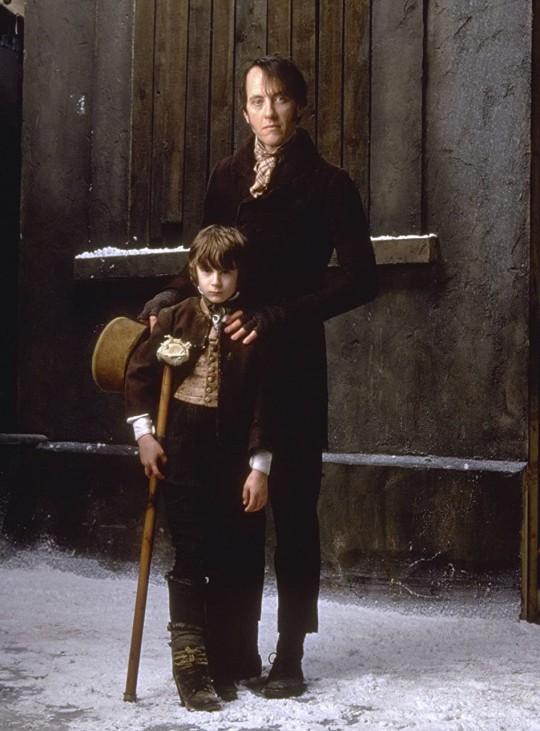
1. Richard E. Grant, from A Christmas Carol (1999).
#list#countdown#best#favorites#christmas#a christmas carol#charles dickens#literature#movies#tv#film#animation#radio#bob cratchit#actors#acting#musicals
6 notes
·
View notes
Text
CARNIVAL ROW - Recensione della prima stagione

Da domani su Amazon Prime Video ritorna l'attesissima seconda ed ultima stagione di Carnival Row. Per l'occasione, eccovi il nostro commento sulla prima stagione...
RECENSIONE STAGIONE 1
#carnival row#serie tv#drama#fantasy#orlando bloom#cara delevingne#tamzin merchant#david gyasi#simon mcburney#andrew gower#recensione#LIAFF: FULL REVIEW
1 note
·
View note
Text
To Be Read July 2023
The Mind
The Molecule of More: How a Single Chemical in Your Brain Drives Love, Sex, and Creativity―and Will Determine the Fate of the Human Race by Daniel Z. Lieberman & Michael E. Long
The Brain: A Very Short Introduction by Michael O'Shea
Consciousness: A Very Short Introduction by Susan Blackmore
The Mind-Gut Connection: How the Hidden Conversation Within Our Bodies Impacts Our Mood, Our Choices, and Our Overall Health by Emeran Mayer MD
Trick Mirror: Reflections on Self-Delusion by Jia Tolentino
Sensitive is the New Strong: The Power of Empaths in an Increasingly Harsh World by Anita Moorjani
The Highly Sensitive Person by Elaine Aron
Laziness Does Not Exist by Devon Price Ph.D.
Wired to Create: Unraveling the Mysteries of the Creative Mind by Scott Barry Kaufman & Carolyn Gregoire
The Body Keeps the Score: Brain, Mind, and Body in the Healing of Trauma by Bessel A. van der Kolk
Music & The Mind (Art Philosophy, Aesthetics, Neuroaesthetics)
Saved by a Song: The Art and Healing Power of Songwriting by Mary Gauthier
The Song Machine: Inside the Hit Factory by John Seabrook
This is What it Sounds Like: What the Music You Love Says About You by Ogi Ogas & Susan Rogers
Why You Like It: The Science and Culture of Musical Taste by Nolan Gasser
The Story of Music: From Babylon to the Beatles: How Music Has Shaped Civilization by Howard Goodall
Of Sound Mind: How Our Brain Constructs a Meaningful Sonic World by Nina Kraus
Aesthetics: A Very Short Introduction by Bence Nanay
Equipment for Living: On Poetry and Pop Music by Michael Robbins
How Music Works by David Byrne
General Non-Fiction / History / Science
The Russian Revolution: A Very Short Introduction by S. A. Smith
The French Revolution: A Very Short Introduction by William Doyle
Linguistics: A Very Short Introduction by P. H. Matthews
Mathematics: A Very Short Introduction by Timothy Gowers
After the End of Art: Contemporary Art and the Pale of History by Arthur C. Danto
Flappers by Judith Mackrell
Marketing for Dummies, 6th edition by Jeanette McMurty MBA
Sinatra: The Chairman by James Kaplan
Get Happy: The Life of Judy Garland by Gerald Clarke
Self-Improvement
Self-Compassion: The Proven Power of Being Kind to Yourself by Dr. Kristin Neff
Self Compassion for Dummies by by Steven Hickman PsyD (in progress)
The Nice Girl Syndrome: Stop Being Manipulated and Abused -- and Start Standing Up for Yourself by Beverly Engel
The Assertiveness Guide for Women: How to Communicate Your Needs, Set Healthy Boundaries & Transform Your Relationships by Julie de Azevedo Hanks, PhD, LCSW
Anatomy of a Breakthrough: How to Get Unstuck When it Matters Most by Adam Alter
Fierce Self-Compassion: How Women Can Harness Kindness to Speak Up, Claim Their Power, and Thrive by Kristin Neff PhD
The Art of Possibility by Rosamund Stone Zander
Be Angry: The Dalai Lama on What Matters Most by His Holiness the Dalai Lama,
Anger: The Conflicted History of an Emotion by Barbara H. Rosenwein
The Power of Fun: How to Feel Alive Again by Catherine Price
In Awe: Rediscover Your Childlike Wonder to Unleash Inspiration, Meaning, and Joy by John O'Leary
Creating a Life That Matters: How to Live and Love with Meaning and Purpose by Manis Friedman & Rivka Goldstein
Fiction
Babel by R. F. Kuang
The Last Bookshop in London by Madeline Martin
A Journey to the Center of the Earth by Jules Verne (narrated by Tim Curry)
In/Spectre #2
The Goldfinch by Donna Tartt (in progress)
The Poisoner's Handbook ed. Raymond T. Bond
5 notes
·
View notes
Text
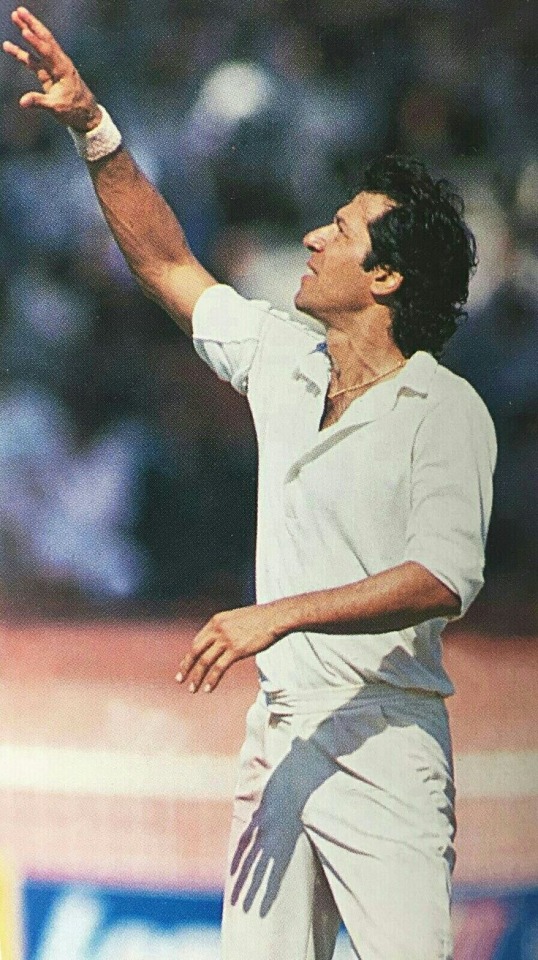

THE WRATH OF KHAN
Imran Khan is indisputably Pakistan’s greatest cricketer. As an all-rounder, he bears comparison with the best there have ever been, a skillful fast bowler and resourceful batsman with a solid defense. But all of them he was a great leader that he really stood out. If you see the history of Pakistan cricket, it shows that Pakistan is a notoriously difficult team to captain.
But he had the massive charisma and stature to unify them and drive them to play above themselves, and that is quite a talent. His finest hour was undoubtedly guiding Pakistan to their first World Cup triumph in 1992, top-scoring with 72 in the final against England at MCG in front of 87k spectators. Although, Imran’s famously imploring his team earlier in the tournament when their hopes hung by a thread to fight ‘like cornered tigers’.
But he has to his name several other outstanding achievements. Imran Khan-led Pakistan to their first Test series wins in both India 1986-87 – obviously a huge thing in his country – and England in 1987. He also led Pakistan to three drawn series in a row against West Indies when West Indies were at the height of their powers. Pakistan, in fact, were the first side to seriously challenge West Indian supremacy.
When they won Test Match at Guyana in 1988, then it was the first time in ten years that West Indies had lost a home Test. The major contribution of Imran Khan when he took 11 wickets in the game. In his career, Imran claimed 80 wickets at 21.18 apiece against West Indies, an incredible record given how strong they were at the time.
He scored some important runs against them too, notably in his final series against West Indies in 1990– 91 when he averaged 50.33 (his overall average against West Indies was 27.67). Imran, who led Pakistan on and off for ten years from 1982 to 1992, mentored some fine players during that period, notably fast bowlers Wasim Akram, Waqar Younis, and Aaqib Javed.
Especially two w’s who swung the ball at pace even greater distances than he did. Imran had the bearing of a leader and for the most part, the players followed. Captaincy elevated his game to a striking degree, averaging 50.55 with the bat and 19.90 with the ball. He turned himself into a considerable bowler with an astonishing record inside Pakistan where visiting fast bowlers tended to find life desperately hard.
Imran himself took 163 wickets at 19.20 apiece there, a better record than he had elsewhere (his overall record was a hugely impressive 362 wickets in 88 Tests at 22.81 each; no one had taken more for Pakistan at the time he retired). Some of the famous players never faced him in Pakistan as he was nursing a stress fracture that prevented him from bowling for the best part of two years when toured therein 1983–84.
England encountered him in 1982 and 1987 and he was a major force both times. In three Tests in 1982, when we were perhaps a little fortunate to win the series 2–1, he scored 212 runs and took 21 wickets. However, he came to England with a passion to beat England in England in 1987. And he led the Pakistan side to do the first time.
In that series, he again took 21 wickets and was the match-winner with the ball in the one game that had a positive outcome at Headingly Leeds. Imran Khan bowling immaculately to take seven for 40 in the second innings. Imran, who was at Oxford in the early 1970s and from there joined Worcestershire, started out as a brisk medium-pacer but through determination and intelligence turned himself into a genuine fast bowler of quality. His two cousins Majid Khan and Javed Burki also led the Pakistan cricket team in the 1960s and 1970s.


Many cricketers remember facing him in one of their earliest games for Leicestershire at around the time he was stepping up his pace. It was the day after David Gower took an early exit from university and we were playing a Benson & Hedges Cup quarter-final at Worcester on a good old New Road pitch with pace and bounce. Gower was caught at slip off him and the ball carried a long way behind me, always a good measure of someone’s speed.
At the age of 18, he made a test debut against England at Edgbaston in 1971 but did not take a permanent place due to below-par performance. Hence, he continued to focus on his education and cricket in England and come back to the side in 1974 on the tour of England.
In county cricket in the period from the mid-1970s to mid-1980s, Imran would have been up there with Mike Procter and Malcolm Marshall as among the best at swinging the ball at pace. Perhaps the thing that completed his education was joining World Series, from which he emerged a far better bowler, learning from watching and working with so many other fine fast bowlers recruited by Kerry Packer. Imran Khan’s charismatic personality and athletic talent made him a popular celebrity all over the world.
In 1976, Imran took 6 for 63 and 6 for 102, for a match figure of 12 wickets to lead his country to 8 wickets win in the 3rdTest at Sydney. This spell surprises the whole Australian team and Pakistani dressing room. Before that match, he was having 9 test matches experience with 25 wickets under his belt with a heavy average of 43.52. Pakistan was trailing 0-1 in the tough series, but Imran’s hostile bowling spell makes Pakistan a marked ascent in the world of cricket.
In 1980, Imran Khan scored 123 runs in the first Test century against the powerful bowling attack of West Indies at Lahore. The years in which he played from 1980 to 1986, on either side of his lay-off for the stress fracture, he was taking his Test wickets at a very cheap cost. In 1982 he returned what remains the best match figures for Pakistan in Tests of 14 for 114 against Sri Lanka in Lahore. The following winter he took an incredible 40 wickets at 13.95 in six Tests against India.
What the Pakistan bowlers, led by Imran and Sarfraz Nawaz, seemed to understand better than everyone else was the mysterious art of swinging the old ball. Therefore, for a batsman, coping with anyone who could move the ball – whether old or new – both ways were always a challenge. You worked hard to get your runs.
The early 1980s was a great era for all-rounders with Imran Khan, Ian Botham, Richard Hadlee, and Kapil Dev all doing great things and rivaling each other for the status of top dog. In the 1987 Cricket World Cup, Khan decided to quit international cricket. But later, the Pakistan public and Zia-ul-Haq the Prime Minister requested him to take back his retirement. He could not reject the public appeal and return to international cricket until 1992.
In terms of bowling, Imran was perhaps consistently the quickest of them. Botham had times where he bowled with the same sort of pace, Hadlee could bowl a sharp delivery if needed but in comparison was slightly down on pace overall, and Kapil was brisker medium than brisk. But they all moved the ball in the air or hit the seam or both, and that was really what made them so difficult to face.
In July 1987, Imran became the first Pakistani bowler to take 300 wickets milestone during the 3rd Test vs England at Lords. If you see the stats, then Imran and Hadlee stood well out in front, averaging around 22 while Botham and Kapil took their wickets at a cost in the high 20s, a reflection really that they were unable to maintain their early brilliance into older age.
Ian Botham probably ranked first as a batsman but Imran, who began his career down the order, developed into a seriously good top-order player and accordingly ended up with six Test hundreds to his name (Botham made 14, Kapil eight, and Hadlee two). Imran kept on improving and became a world-class batsman in all forms.
Indeed, towards the end of his career, he was playing more as a batsman who bowled than a bowler who batted, and when he scored those runs in the 1992 World Cup final, he was batting at number 3. His Test record with the bat was highly respectable, an average of 37.69 comparing well to Botham’s 33.54, Kapil’s 31.05, and Hadlee’s 27.16.
Imran retired from all forms of cricket after winning the 1992 world cup. What gives Imran preeminence in this all-rounder fest is his stature as a leader of a national side that had previously lacked any direction. Since Imran, Pakistan cricket has rarely been stable. Talented players continue to be produced in extraordinary numbers given the absence of a coherent domestic structure.
But it has been engulfed in more than one corruption scandal, while a terrorist attack on a touring Sri Lanka team in 2009 has forced them since to set up a new home in the Middle East. Imran himself has entered politics in the ambitious hope of addressing his country’s many problems. After retirement, he entered politics and outspoken critic of government corruption in Pakistan.
Imran Khan laid the foundation of Pakistan Tehreek-e-Insaf in 1996. Imran Khan started a new journey into Pakistan politics and continued their efforts after badly failing in the 2002, and 2007 elections. Eventually, his efforts bring some happiness to his party becoming a strong candidate for the 2013 elections.
Even in one accident he badly injured his neck and back to falling from a platform at an election campaign rally. Therefore, his braveness in fighting against corruption & poverty won a plurality of seats in the July 2018 elections. Then he became the 22nd prime minister of Pakistan. The first cricketer to be knighted a prime minister of any country.
Imran Khan remains a philanthropist in the public eye. He has a great passion to build a cancer hospital after his mother died of those diseases in 1985. His wish was fulfilled by completing Shaukat Khanum Hospital in Lahore in 1994 named after Khan’s mother.
6 notes
·
View notes